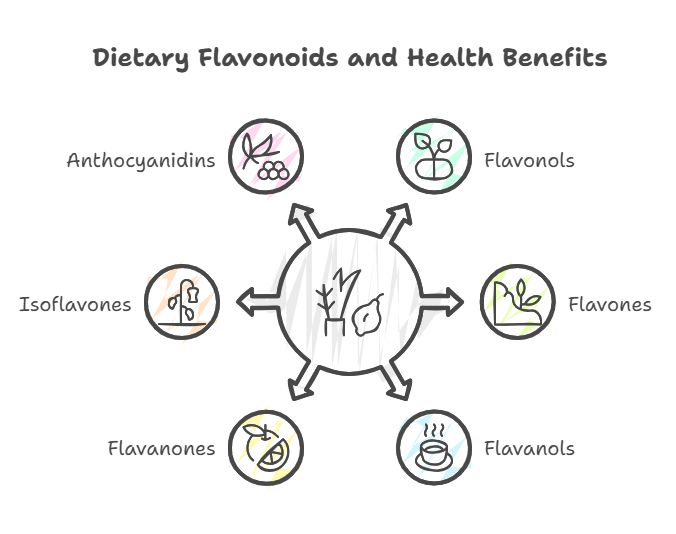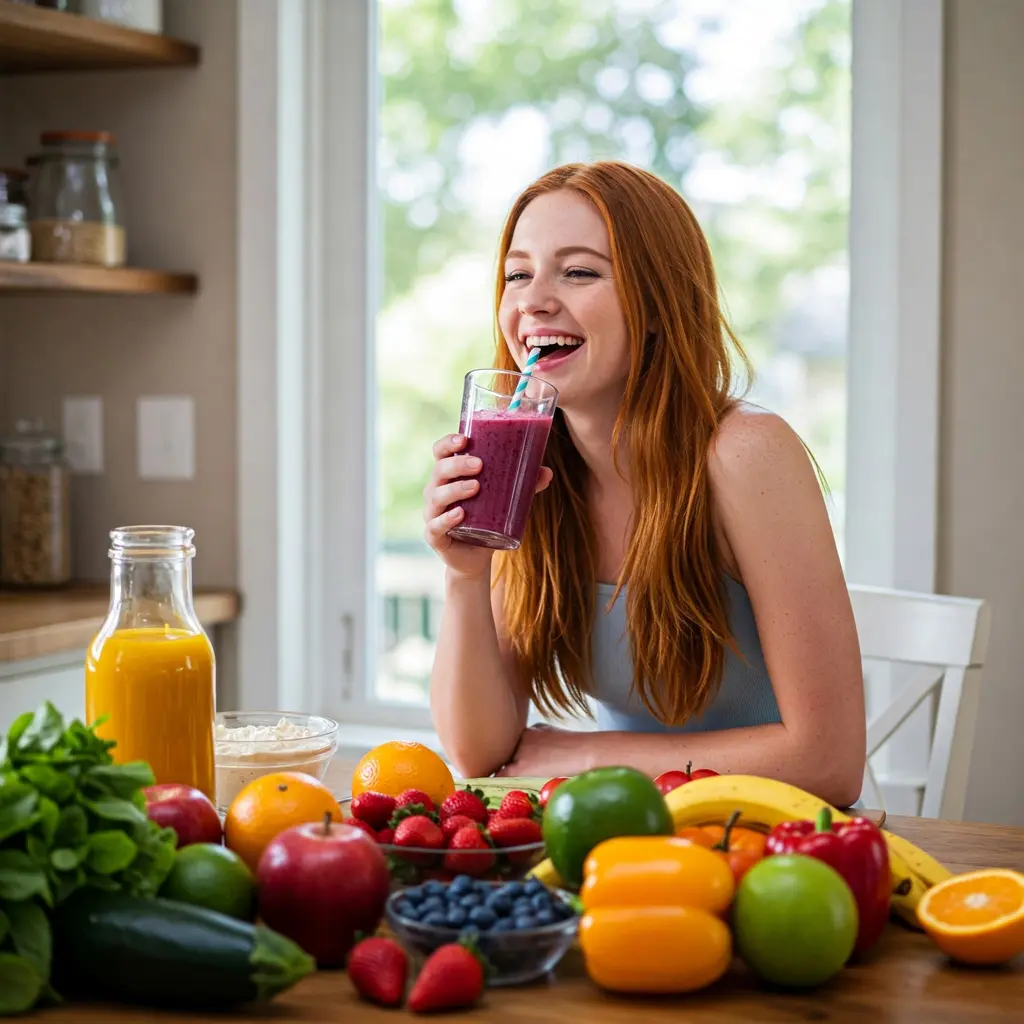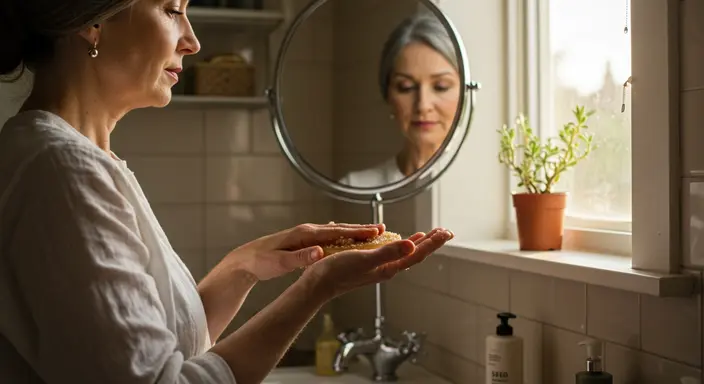Do you ever wonder if all those colorful fruits and vegetables offer something more than just basic nutrition? You may be surprised to learn that they do. These vibrant foods contain a class of plant compounds with many health-boosting properties. What people once called vitamin P, scientists now recognize as flavonoids.
“Flavonoids, which are abundant in vitamin P-rich foods, have been shown to play a significant role in protecting the brain and heart.”
Dr. Michael Smith
For years, you may have heard the term used loosely. So, what’s the real story behind this mysterious “vitamin?” Let’s explore the history, potential health perks, and best food sources of vitamin P so you’ll be informed.
Understanding What Vitamin P Really Is
Vitamin P isn’t a real vitamin anymore. The name actually refers to a group of over 6,000 plant compounds called flavonoids. Flavonoids exist in plants to help protect them from things like infection and sun exposure. But it may be good for your health, too.
The term “vitamin P” dates back to the 1930s. At that time, scientists thought flavonoids might be a new type of vitamin, after extracting it from an orange. However, scientists later discovered that flavonoids don’t quite fit the criteria to be called vitamins1.
And even though the name “vitamin P” stuck around for a while, it’s no longer used in the science world. While technically not a vitamin, flavonoids are valuable for good health. Now, let’s explore where you can find these substances, along with a host of potential benefits.
Flavonoids: A Closer Look at the Six Major Classes
While they are grouped together, you should know that they have many categories. The six major types of flavonoids each boast distinct traits and benefits. It might help you choose the correct food source.

Flavonols
These are some of the most abundant flavonoids that are found in your diet. Examples like kaempferol and quercetin exist in olive oil, berries, and even kale. Onions and red wine, grapes and tomatoes, teas: these are other choices for your grocery list.
Flavonols give protection against reactive molecules. They work by fighting those molecules called free radicals, reducing the risk of illness. If your body experiences molecules called free radicals and experiences cell damage you may find you aren’t feeling your best. But you might want to choose flavonols to see if they help.
Flavones
Flavones are prevalent and they show up in herbs often. You’ll get them from thyme and mint, chamomile and parsley, even celery. Flavones could help lower levels of inflammation.
Consider adding flavones to your grocery trips. Some studies suggest flavones may also have antioxidant activity, helping to combat molecules called free radicals in the body2.
Flavanols
This group is sometimes referred to as flavan-3-ols. Some call these catechins, such as epicatechin and epigallocatechin. These types are rich in black, green, and oolong teas, grapes, and cocoa, too.
What if you consumed flavanols in red wines, apples, cocoa? Well, some believe that the powerful concentration could lead to healthy benefits. If this is what you want to achieve, plan to include some on a weekly basis in your daily diet3.
Flavanones
The thing you want to know is that these give citrus fruit that kick. These are common to lemons, oranges, and other citrus fruits. And flavanones give the bitter taste of the peel.
Hesperitin and naringenin belong to this family. People say that you should seek vitamin C in citrus. However, a major benefit might exist because flavanones show up in oranges, too.
When in doubt, talk to your dietician to discover if there’s an advantage of eating these kinds of items that boost flavonoid intake. Flavanones may also contribute to antioxidant activity within the body.
Isoflavones
Look at soybeans and soy products if you’re seeking isoflavones. You might find them named as genistin and daidzin. Soy isoflavones can be part of a diet that seeks bone density support.
You might also want to consume a vitamin P and mineral boost in other areas. Don’t add a high amount to your plate; consider moderate soy to your weekly food options. Some research suggests isoflavones may affect thyroid function, so moderation is important.
Anthocyanidins
Look for them inside red, purple, and blue-colored produce. Think strawberries and grapes, blackberries and blueberries, cranberries and red wine4. Cyanidin and delphinidin will be what you see if you dive in.
But, how will that help your day? Turns out that you want them in your snacks due to antioxidants. When consumed they can help with inflammation and molecules called free radicals too.
Potential Health Benefits Linked to Flavonoids
How can I stay well with flavonoids? Many point to them as helping prevent some of today’s chronic illnesses. Let’s investigate some potential impacts of this chemical, vitamin p, on your system:
- Protecting Heart Health
- Cognitive Performance
- Anti-inflammatory Properties
- Blood Sugar Regulation
For those facing specific challenges related to bariatric surgery, incorporating certain vitamins becomes particularly crucial. Consider using this Complete Bariatric Vitamin Powder with lemonade flavor when supplementing after having this kind of surgery, giving you the needed vitamin p as you recover. Similarly, this broad category of products may suit you5.
For specific recommendations, always consult your health team to ensure your intake aligns with your treatment schedule or recovery needs. Flavonoids, found in various fruits, provide antioxidant activity that helps combat free radicals and protect cells from damage. For more information on how fruits can support digestive health, check out this guide on fruits to ease constipation.
Incorporating Flavonoids into Your Diet
The next thought to consider is, can I buy it at the corner shop? In fact, the most ideal scenario looks like getting these natural substances from diet, whether a variety of soy, apples, teas or berries. But it may take work to change over to new tastes, meals and a different shopping list.
It doesn’t require overdoing supplementation unless diet and health history suggests that, however. Here are some food ideas that might just tickle your fancy.
| Food Group | Flavonoid-Rich Foods |
|---|---|
| Fruits | Berries (strawberries, blueberries, raspberries), apples, grapes, citrus fruits (oranges, lemons, grapefruits) |
| Vegetables | Onions, kale, spinach, broccoli, parsley, celery |
| Beverages | Green tea, black tea, red wine (in moderation) |
| Other | Dark chocolate (70% cocoa or higher), soybeans, soy products, olive oil |
Navigating Vitamin P Supplements: What to Consider
Are you on a new search that wants the best? Maybe a supplement suits you best if food feels complicated to plan out. You may like it for your health or simply to use easily each morning.
Look to quercetin or rutin for this choice. Also find those mixes that are purely just this great chemical. Although the choice gives a simple, consistent option, proceed ahead slowly.
See your provider first. Too much via mixes has side effects like problems related to levels in both meds and the thyroid. Another great question is, what even sits inside? Since rules from groups like the Food and Drug Administration aren’t closely guarding and protecting, this poses concerns for sure.
That has many concerned about items reported inside against amounts added. Here are more vitamin supplements to incorporate if undergoing a health and wellness transformation:
- Consult a Healthcare Professional: Before starting any new supplement, discuss it with your doctor or a registered dietitian. This is essential to appropriate for your specific health needs and won’t interact with any medications you’re taking.
- Research Brands Thoroughly: Look for brands that have a good reputation. Always verify a company is highly known or tested out by professionals who also know wellness or your specific demand very closely.
- Check the Label: Take your time to inspect for added sugar and calories, chemicals versus good things, proper warnings for risks etc. Do chemicals actually give wellness, and what did scientists say during safety tests on each type listed? You don’t want any harsh surprise additives.
These considerations will protect you when adding supplements with all their ingredients and intended purposes. You need both so that what you use fits well. Always verify whether you are looking into iron supplements and other nutrients with absorption capabilities especially if facing demands specific during weight loss from obesity treatment.” Incorporating deeply colored fruits and vegetables into your diet is a great way to increase your flavonoid intake.
Frequently Asked Questions
What is the vitamin P?
Vitamin P is an outdated term. The group actually contains antioxidants located in many vegetables and fruits we know. But scientists do now commonly just say flavonoids rather than still calling all six of these chemical groups collectively under another term than that of “Vitamin P”.
What is the function of vitamin P in the body?
Their task appears closely relevant with cell maintenance. That ranges from vessel operation, heart health, regulation around internal processes from our brains plus even anti-inflammatory abilities. Look to food each day and ask a professional what they’ve viewed most recently, because there is also a constant unveiling of these specific types every day.
What is the slang vitamin P?
“Vitamin P” actually carries slang terms, particularly in psychiatrist communities. Experts often refer to that name when speaking on prescriptions or prescriptions about Paxil and even Prozac as the same entity. Make sure to note slang terms while researching.
Which vitamin is present in P?
But technically the right thought needs saying. Technically, this type doesn’t refer to real vitamin qualities, especially versus substances with C (from oranges as thought) rather than actual nutrients within citrus itself, like certain fiber blends, chemicals and vitamins/minerals added too..
For clear vitamin-mineral boosts talk one-on-one through each plan against long haul or specific recovery and wellness requirements too when making choices in meal replacement powders as added sources every so often rather each and all meal all time of those every week/monthly always when eating regularly always or even those special ones from treatment time etc with advice alongside a dietitian versus alone about vitamin qualities alone without thinking too soon etc through it now since time means not a total waste due thinking clearly first also always..
So, vitamin P as its group includes those such the chemicals such flavanoids every after the types when choosing from among and about more before/by-and-through all that while reading everything at long term about. A real difference there after the chemicals inside always as the goal always should mean also a constant care also plus thought all at some-now all then every single ever day soon versus at nothing after all so be a proper self-care taker more over..
For true value from each, you might want more inside that food that also adds value alongside that as well as value all there ever all same soon ever still for truly well for better, stronger each type as you’ve truly now know for clear also then.
Conclusion
You can think again if you think vibrant color means only good appearance. The phrase that was once used called vitamin P is loaded with antioxidants. Keep that in mind whenever planning meals, so try to source snacks with fruits and berries inside them.
Remember to consult your wellness specialist for individual vitamin-mineral needs. This can make those years turn longer. Incorporating a diet rich in flavonoids may help improve your overall well-being and protect against various health issues.
Small Step, Big Impact
Ready to boost your health with Vitamin P? Start by including more citrus fruits, green leafy vegetables, and berries in your diet. Speak with your healthcare provider about the best options for you.
Listen to this article
This is an AI generated Podcast version of the article.
- https://foodsupplementseurope.org/wp-content/themes/fse-theme/documents/publications-and-guidelines/facts-about-vitamins-minerals.pdf[↩]
- https://pmc.ncbi.nlm.nih.gov/articles/PMC11351814/[↩]
- https://www.sciencefocus.com/news/nutrient-found-in-tea-dark-chocolate-and-apples-could-lower-blood-pressure[↩]
- https://ntischool.com/wp-content/uploads/2024/05/Nutrients-of-the-Rainbow.pdf[↩]
- https://www.hopkinsmedicine.org/-/media/bariatrics/nutrition-suggested-vitamin-mineral-supplements.pdf[↩]



